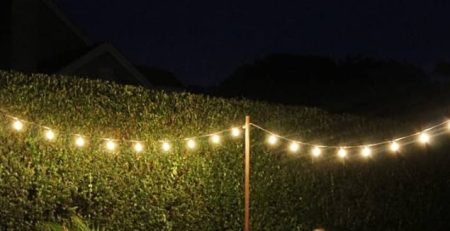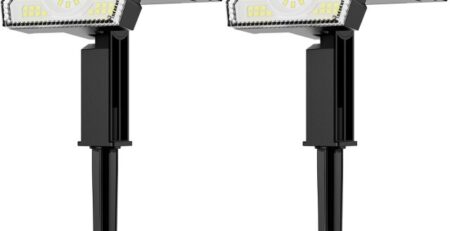Easy Ways to Install Solar Path Lights Yourself
Illuminating your outdoor spaces has never been easier or more eco-friendly than with solar path lights. These versatile and energy-efficient lighting solutions not only enhance the beauty of your garden, walkway, or driveway but also provide essential visibility and safety during nighttime hours. If you’re considering adding some luminous charm to your outdoor areas, you’ll be pleased to know that installing solar path lights is a straightforward process that most homeowners can tackle as a DIY project. In this comprehensive guide, we’ll walk you through the simple steps to install solar path lights, share some expert tips for optimal placement.
Choosing the Right Solar Path Lights for Your Outdoor Space
Before diving into the installation process, it’s crucial to select the appropriate solar path lights for your specific needs and preferences. The market offers a wide array of options, ranging from sleek modern designs to more traditional lantern-style fixtures. When making your selection, consider the following factors:
- Brightness and Lumens: The brightness of solar path lights is measured in lumens. For general path lighting, fixtures with 5-15 lumens are usually sufficient, while areas requiring more illumination may benefit from lights with 50-100 lumens or more.
- Battery Capacity: Look for longest lasting solar path lights with high-quality, rechargeable batteries that can store enough energy to keep your lights shining throughout the night.
- Solar Panel Efficiency: Opt for lights with monocrystalline or polycrystalline solar panels, as these tend to be more efficient at converting sunlight into usable energy.
- Durability and Weather Resistance: Since these lights will be exposed to the elements, choose models with robust construction and weather-resistant materials to ensure longevity.
- Color Temperature: Consider whether you prefer warm white (2700-3000K) for a cozy ambiance or cool white (5000-6500K) for brighter, more vibrant illumination.

Step-by-Step Guide to Installing Solar Path Lights
Installing solar path lights is a relatively simple process that doesn’t require any specialized tools or electrical knowledge. Follow these steps to illuminate your outdoor spaces with ease:
- Plan Your Layout: Before installation, decide on the placement of your solar path lights. Walk your intended path during the day and use small flags or markers to indicate where you want to position each light.
- Prepare the Ground: Clear any debris, rocks, or vegetation from the areas where you’ll be installing the lights. If the ground is particularly hard or compacted, you may want to water it lightly to soften it up.
- Assemble the Lights: Most solar path lights come in multiple pieces that need to be assembled. Typically, this involves attaching the light fixture to the stake and ensuring the solar panel is properly connected.
- Insert the Stakes: Gently push the stake of each light into the ground at your marked locations. If you encounter resistance, avoid forcing the stake, as this could damage it. Instead, use a garden trowel to create a pilot hole.
- Adjust and Align: Once all lights are in place, step back and view them from different angles to ensure they’re straight and evenly spaced. Make any necessary adjustments.
- Activate the Lights: Most solar path lights have an on/off switch. Make sure each light is turned on so it can begin charging and will illuminate automatically at dusk.
- Allow for Charging: For optimal performance, allow your newly installed solar path lights to charge in direct sunlight for at least 8-10 hours before expecting them to function at full capacity.
Maximizing the Efficiency and Aesthetic Appeal of Your Solar Path Lights
To ensure your solar path lights perform optimally and enhance your landscape’s beauty, consider the following tips and tricks:
- Optimal Sunlight Exposure: Position your solar path lights in areas that receive ample direct sunlight during the day. Avoid placing them in heavily shaded areas or under dense foliage, as this can significantly reduce their charging capacity and overall performance.
- Strategic Spacing: The general rule of thumb is to space solar path lights about 6-8 feet apart. However, this can vary depending on the brightness of your chosen lights and the specific needs of your space. Experiment with different spacing to achieve the desired illumination and aesthetic effect.
- Consider Height Variations: Mix and match lights of different heights to create visual interest and depth in your landscape design. This can be particularly effective when lighting larger areas or creating focal points along your path.
- Incorporate Landscape Features: Use solar path lights to highlight key features in your yard, such as flower beds, water features, or architectural elements. This not only improves visibility but also adds drama and dimension to your outdoor spaces after dark.
- Regular Maintenance: Keep your solar path lights functioning at their best by periodically cleaning the solar panels and lenses. Use a soft, damp cloth to remove dust, dirt, and debris that can accumulate over time and reduce efficiency.
- Seasonal Adjustments: Be prepared to make slight adjustments to your solar path lights’ positions as the seasons change. The angle and duration of sunlight can vary throughout the year, so repositioning your lights can help maintain optimal charging and performance.
- Creative Layouts: Don’t be afraid to think outside the box when it comes to arranging your solar path lights. Consider creating patterns, curves, or even spelling out words or shapes for a unique and personalized touch to your outdoor lighting design.
Conclusion
Installing solar path lights is an excellent way to add both functionality and aesthetic appeal to your outdoor areas. With their easy installation process, eco-friendly operation, and low maintenance requirements, solar path lights offer a versatile and sustainable lighting solution for homeowners looking to enhance their landscapes. By carefully selecting the right lights for your needs, following the simple installation steps, and implementing some of the expert tips provided, you can create a welcoming and enchanting outdoor environment.
For those seeking high-quality, innovative solar lighting solutions, BITPOTT Lighting offers a wide range of options to suit various styles and needs. Our commitment to quality control, efficient communication, and continuous product innovation ensures that you’ll find the perfect longest lasting solar path lights to illuminate your outdoor spaces. If you have any questions or need assistance in choosing the right solar path lights for your project, don’t hesitate to reach out to our dedicated team at info@forigat.com.
References
- U.S. Department of Energy. (2021). Outdoor Solar Lighting. https://www.energy.gov/energysaver/outdoor-solar-lighting
- Lighting Research Center, Rensselaer Polytechnic Institute. (2020). Outdoor Lighting: Visual Efficacy. https://www.lrc.rpi.edu/programs/nlpip/lightinganswers/lightpollution/efficacy.asp
- American Lighting Association. (2022). Landscape Lighting Basics. https://www.americanlightingassoc.com/resources/landscape-lighting-basics









-1-1-450x231.webp)

Leave a Reply